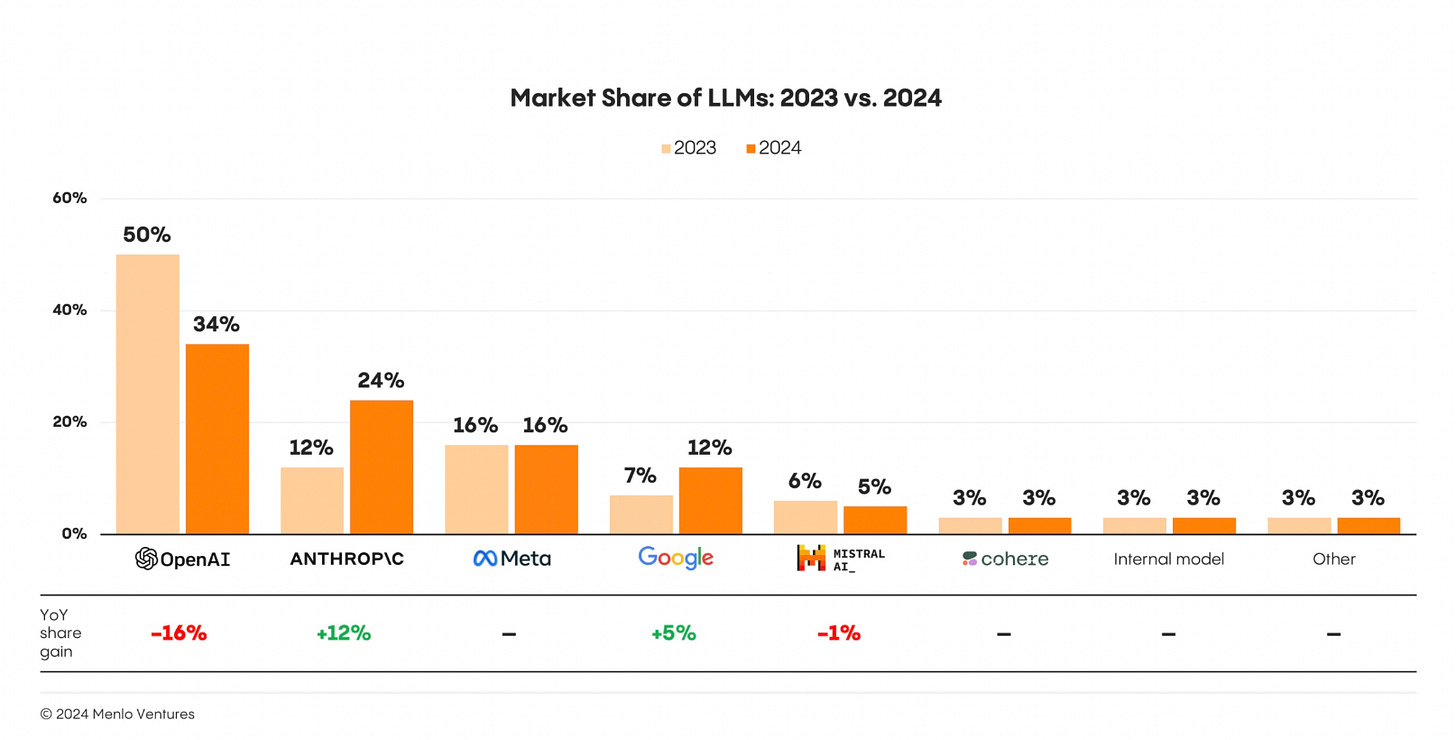DeepSeek: The AI Company OpenAI Thinks It Is
You can't public policy your way to AGI ??
Deepseek AI, a Chinese foundation model company, released Deepseek V3, a model so good that it beats GPT-4o and Claude-3.5-Sonnet, the two best proprietary models out there. Deepseek V3 is, therefore, the best open-source model available.
Deepseek V3 has impressive performance, even in code and math benchmarks.
Deepseek V3 was trained with less than $6 million, which is ridiculously cheap compared to what companies like OpenAI and Anthropic spent to achieve the same performance. I have been saying this for the past few months, but I will say it again: it is impressive what Chinese AI research labs are able to accomplish under compute constraints due to US policy maneuvers (e.g., the Chips Act). As it is often the case, genius shines under constraints.
Expect to see more impressive innovation coming from the East (especially China) in 2025. Plan accordingly so you can take advantage of that.
Due to censorship, expect Chinese models to hide some details, such as the Tiananmen Square incident. So, don’t use these models for historical accuracy, but you will still benefit from having a mix of models from different providers. For tech-heavy use cases like code generation, it really doesn’t matter if the model can’t discuss Tiananmen, so choose models or ensembles of models based on your use cases.
Deepseek V3 is on par in performance with GPT-4 and Claude 3.5 Sonnet but can be accessed at a much cheaper price. This is also a trend I mentioned in my past articles. LLMs are quickly becoming commodities, and I expect this trend to continue. What that means is that the value will now lie in the apps built on top of models, the brand, and the ability to sell to enterprises. So far, OpenAI, with ChatGPT, dominates the B2C market because of its stronger brand. The brand is stronger because OpenAI literally started the generative AI craze two years ago and is continually shipping improvements that make ChatGPT sticky. It also helps that it is free to use for most people who don’t see the value of a $20 monthly subscription.
The B2B market is a bit fragmented, and I expect it to further fragment in 2025 and beyond.
OpenAI is in pole position thanks to a deal to make their models available only through the Azure cloud platform, and we know Azure has a lot of existing enterprise clients to leverage (usually consultants like Accenture do all the work for them and take in their consulting fees, which has led to the record generative AI bookings Accenture has posted these past two years). So, I expect OpenAI (at least its models through Azure) to continue to take a good share of the B2B market. But that share is poised to diminish or stabilize, first because Google is suing Microsoft to be able to host OpenAI models on Google’s platform, and that might be successful, although I doubt it; second, Anthropic is taking market share, especially because of the superiority of its model for specific use cases like code generation.
Overall, I expect the market to be fragmented by geographic region, with OpenAI and Anthropic dominating the North American market, Cohere potentially dominating Canada because of its local connections, and Mistral likely getting a fair share of B2B in France and Europe due to local connections as well. Deepseek and Qwen will probably dominate the Asian market. Local connections will be useful because AI has quickly become a geopolitical battle, with each block trying to win or stay relevant. The US is using chip regulations to prevent China from catching up (which seems not to be working, given what companies like Deepseek have achieved with less compute). France is trying to position itself as the AI center of Europe, with a deep pool of math wizards (but math wizardry is a necessary but not sufficient ingredient; you also need a strong entrepreneurial culture, venture capital, funding for diverse talents, and funding by people who actually know tech, not just technocrats from Sciences Po Paris). China is also innovating in open-source to stay relevant, and it is quite successful for now.
Locality can only go so far—model quality will be crucial, as well as existing distribution networks. For example, it will be easier for a company that is on Azure to use OpenAI’s models, given that they are state-of-the-art. And some French companies will not use Mistral models if the Anthropic alternative is far better for their use cases.
Expect more exploration of Deepseek from me in the near future, along with more rambling on what the generative AI/AI landscape will look like in 2025.
In the meantime, read this:



